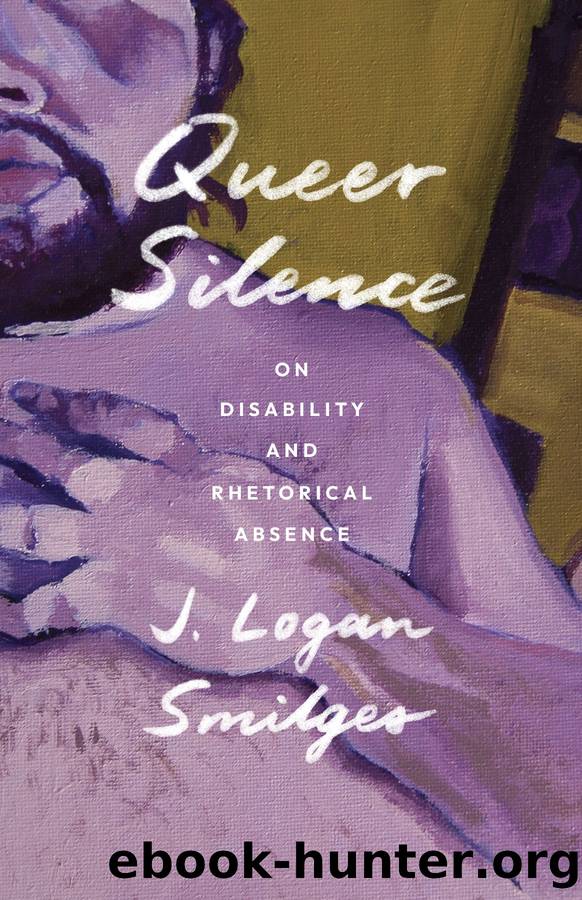Queer Silence by J. Logan Smilges

Author:J. Logan Smilges [Smilges, J. Logan]
Language: eng
Format: epub
Tags: SOC029000 SOCIAL SCIENCE / People with Disabilities, SOC064020 SOCIAL SCIENCE / LGBTQ+ Studies / Transgender Studies, SOC032000 SOCIAL SCIENCE / Gender Studies
Publisher: University of Minnesota Press
Published: 2022-10-25T00:00:00+00:00
Identifying Silence
To combat this erasure, I offer a theory of trans onto-phenomenology that seeks to excavate forms of gender nonconformance that do not reach the level of âthe authenticâ or âwhole.â That is, I offer a counterresponse to transnaturalism that draws on the model of queer silence I describe throughout this book. Silence here is not to be taken as emptiness but as a signifying absence that often coexists with other forms of meaning-making. In the context of trans experience, silence refers not only to the absences of trans people and experiences from archives and public memory but also to the subtleties of gender variance, the ways that nonconforming gender expressions can fly under or around the radar of gender identification.48 While transnaturalism is organized around a confessional logic, where subjects must align themselves with a particular category (i.e., âI am transgenderâ), trans silence directs us to alternative modes of being and strategies of relating. Trans silence is a way to conceive of, dig up, unpack, and celebrate gender nonconformance without relying on neoliberal identity politics. For trans elders, silence is particularly important as it makes space for models of gender development that are neither linear nor predictable. Silence, as opposed to identitarian disclosure, remains open to the unbidden, resisting stasis in favor of motion.
What I mean by motion is something similar to how Hil Malatino describes âtrans lives in interregnum,â as âa kind of nowness that shuttles transversally between different imaginaries of pasts and futures and remains malleable and differentially molded by these imaginaries.â49 For Malatino, the interregnum widens the scope of trans temporality to include not only the measured benchmarks of a biomedicalized transition but also those moments in between, outside of, and even in tension with those benchmarks. Even though biomedical markers are incredibly important to some trans people, including many trans elders, transnaturalism stages these markers linearly, as a trajectory from a personâs âwrongâ body at birth to their âcorrectâ biomedicalized one. Malatino warns that this kind of âteleological account of transition . . . is radically inadequateâ because âit doesnât begin to dignify the complexities of trans experiences.â50 These complexities include the circumstances faced by many trans elders, such as those who do not want to medically transition, who choose to medically transition after their plasticity has presumedly expired, or who may have attempted to transition earlier in life but were never perceived as plastic enough to warrant biomedicalized intervention. Each of these groups reveal the racialized exclusivity of âtransâ as a liberal subject category, especially as it is defined and cemented by transnaturalism.
The elders who do not or cannot medically transition undergo a process of racialization that exposes a transnormative hierarchy of whiteness. Even among those elders who are white, who may have once been ideal trans children brimming with white plasticity, their advanced age pushes them into an ageist fungibility. Much like how Mia Fischer argues that Chelsea Manningâs âinability to âproperlyâ embody and perform hetero- and homonormativity rendered her as the alien
Download
This site does not store any files on its server. We only index and link to content provided by other sites. Please contact the content providers to delete copyright contents if any and email us, we'll remove relevant links or contents immediately.
Warriors (9781101621189) by Young Tom(10747)
Red Rising by Pierce Brown(8615)
Dresden Files 01 - Storm Front by Jim Butcher(5068)
Enders Game 5 - Ender's Shadow by Orson Scott Card(4472)
Guilty Pleasures by Laurell K Hamilton(4363)
The Dresden Files Omnibus (1-15) by Jim Butcher(4000)
The Heroin Diaries by Nikki Sixx(3497)
Drawing Cutting Edge Anatomy by Christopher Hart(3454)
A Stormy Greek Marriage by Lynne Graham(3385)
The Boy, the Mole, the Fox and the Horse by Charlie Mackesy(3001)
Sharp Objects: A Novel by Gillian Flynn(2958)
Slugfest by Reed Tucker(2945)
11/22/63: A Novel by Stephen King(2915)
The Complete Persepolis by Marjane Satrapi(2866)
The One Memory of Flora Banks by Emily Barr(2804)
Men at Arms by Terry Pratchett(2784)
Grumpy Cat by Grumpy Cat(2691)
Altered Carbon (Takeshi Kovacs Novels) by Richard Morgan(2660)
The Twelve-Month Marriage Deal by Margaret Mayo(2610)
